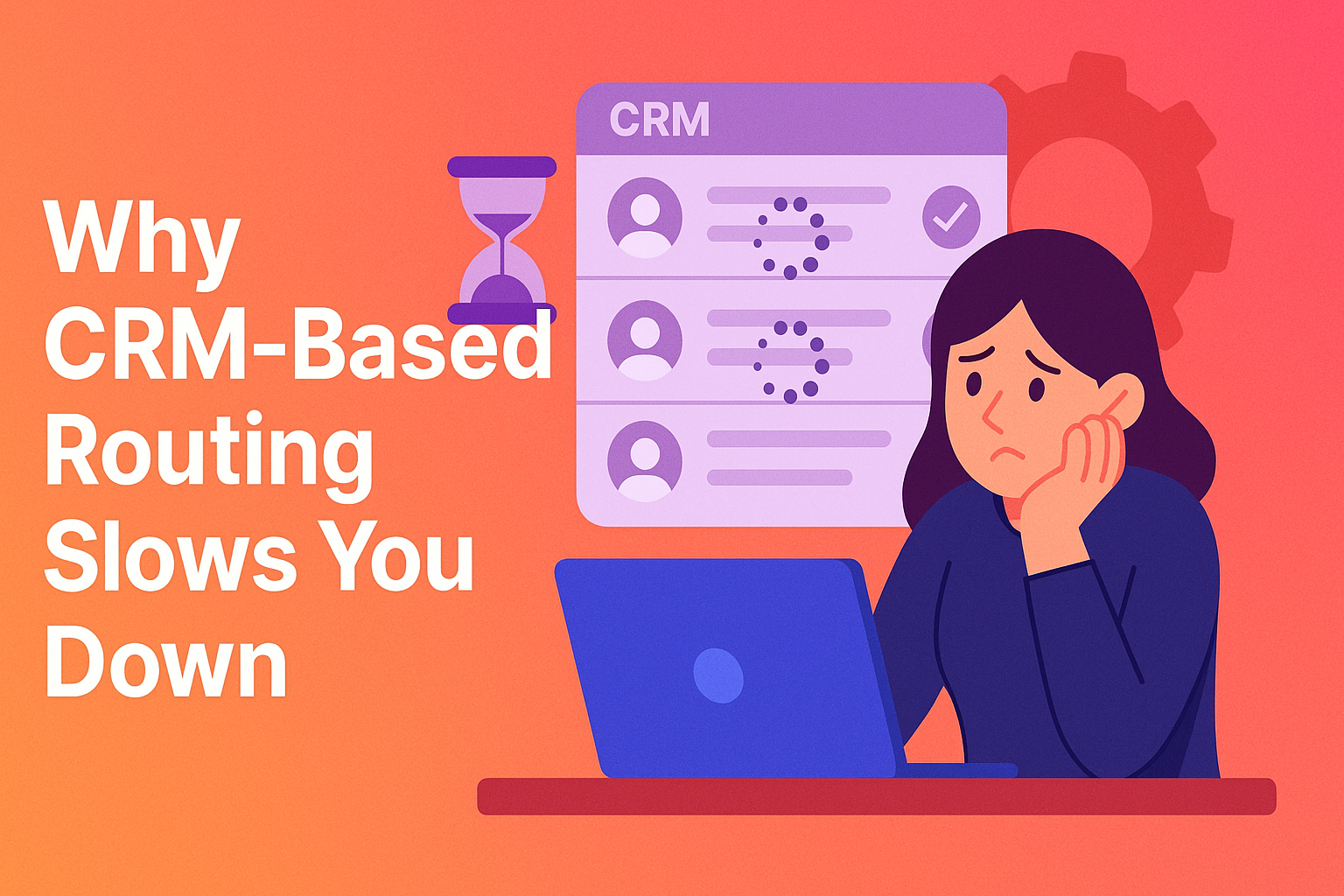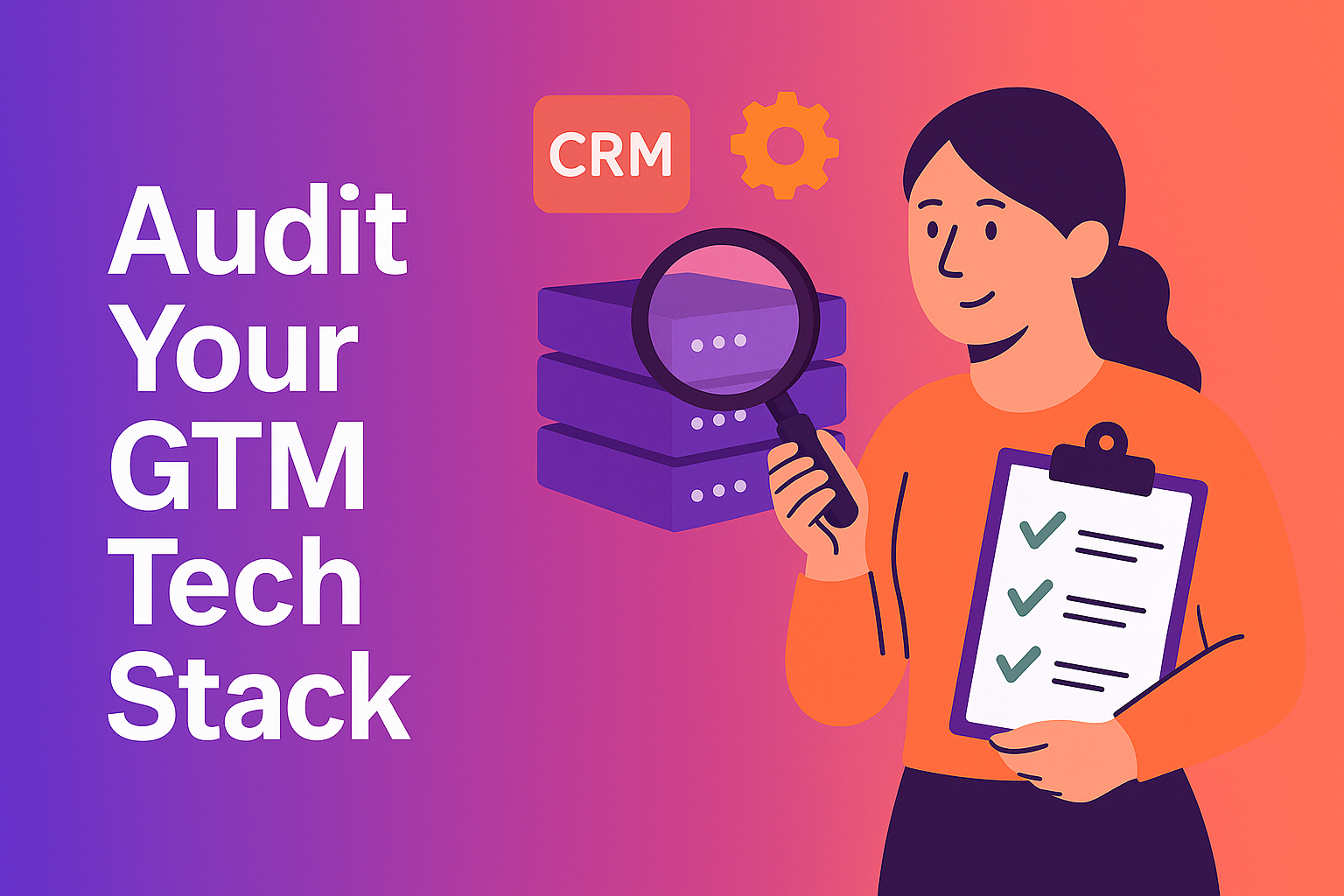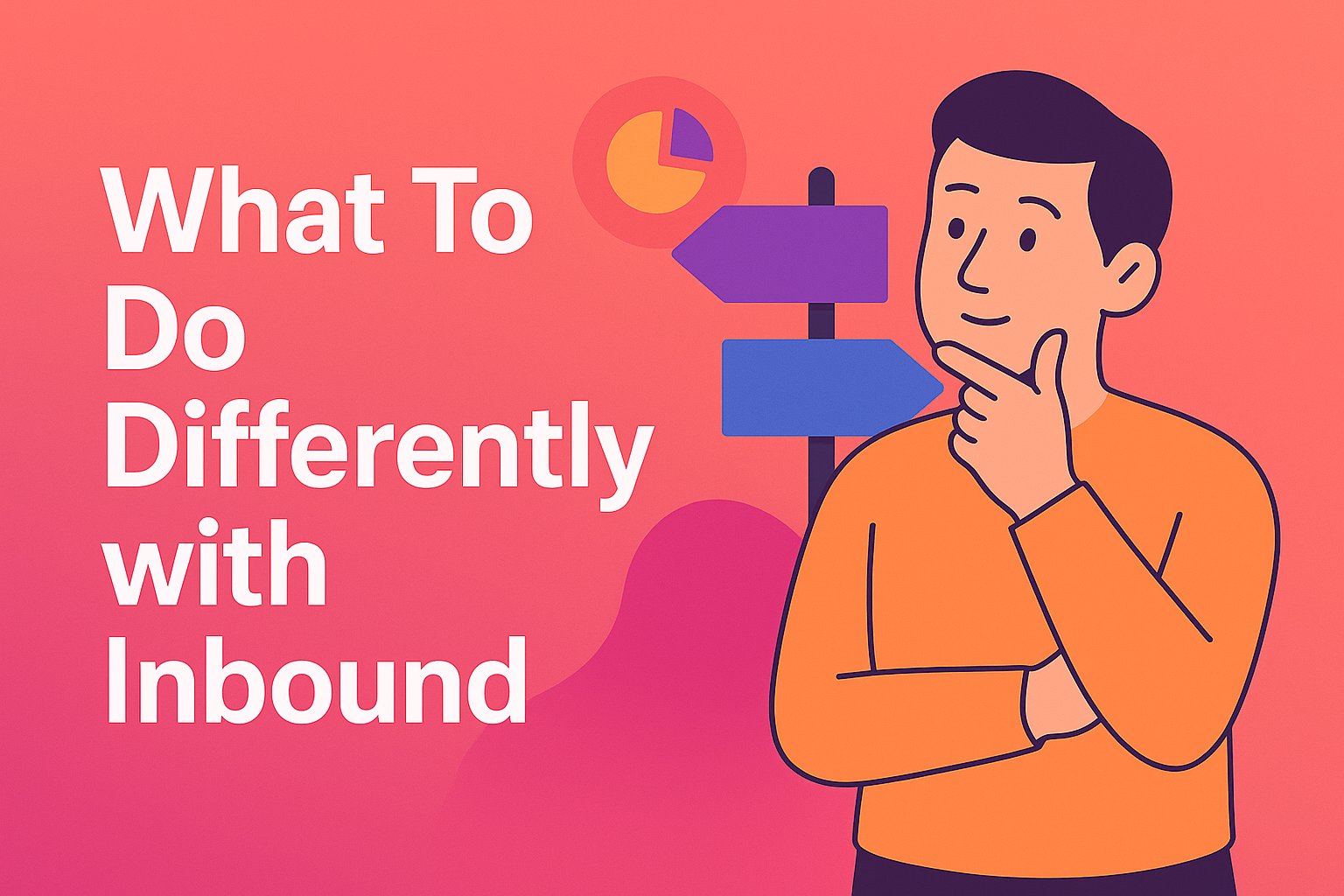Why CRM-Based Routing Slows You Down
When a prospect fills out a form, they are signaling real intent. The faster you can respond, the better your chances of turning that interest into pipeline. But many teams are still stuck with CRM-based routing workflows that slow everything down. Leads sit in queues, enrichment delays pile up, and the handoff to sales feels clunky. By the time a rep reaches out, the urgency has already faded.
The result is lost opportunities and frustrated buyers. To stay competitive, companies need to close this follow-up gap and replace outdated CRM routing with systems that deliver instant engagement.
The follow-up gap and why it kills deals
The follow-up gap is the delay between when a prospect signals interest and when your team actually engages them. In practice, it often looks like this:
- A form submission gets logged but sits unassigned for hours.
- A generic thank-you page leaves the prospect wondering what happens next.
- CRM enrichment and assignment lag behind, delaying the rep’s first touch.
- No instant booking options, so the buyer waits.
Meanwhile, the buyer’s attention shifts elsewhere. They hop into their next meeting, get pulled into other priorities, or even fill out a competitor’s form that lets them book time instantly. By the time your team reaches out, the urgency is gone and the window of opportunity has closed.
Why traditional CRM routing fails
Most CRM-based routing systems were not built for speed. Manual processes like round-robin assignment or owner lookups add friction instead of removing it. Even automated rules often come with delays as data syncs and enrichment steps run in the background.
Another issue is the post-form experience. Generic thank-you pages that promise “a rep will reach out soon” waste the moment when the buyer is most engaged. Without instant booking options, prospects are left waiting. And in a high-velocity market, waiting means churn.
Finally, CRM notifications rarely create the urgency needed for reps to act in real time. By the time an email hits their inbox or a task appears in the system, the lead has already cooled.
How to close the follow-up gap
The good news is that fixing this problem is possible. High-performing teams use a few simple strategies to ensure every inbound lead gets instant attention.
- Instant lead routing: Use rules to assign leads in real time so they go straight to the right rep the moment the form is submitted.
- Show availability immediately: Replace generic thank-you pages with a scheduling flow that shows the assigned AE’s calendar right away.
- Automate notifications: Trigger alerts when a meeting is booked so reps can prepare without wasting time on manual follow-up.
Some teams also add fallback logic for when no rep is available. That might mean routing to a backup pool, offering asynchronous options like pre-recorded videos, or auto-disqualifying leads that do not fit your ICP. The goal is to ensure no lead slips through the cracks.
The upside of streamlined routing
When you eliminate delays and make it easy for buyers to engage right away, the payoff is significant:
- Higher demo conversion rates through immediate engagement.
- More meetings booked without requiring rep intervention.
- Faster speed to pipeline and shorter sales cycles.
- Reduced no-shows because prospects feel ownership of the time they booked.
- Sales reps more focused on closing deals instead of chasing leads.
Final thoughts
CRM-based routing is slowing down too many sales teams. Leads that should convert quickly end up stuck in workflows that no longer fit how B2B buyers want to engage.
By moving to intelligent, instant routing and embedding scheduling experiences directly into the lead capture process, you can close the follow-up gap, improve conversion rates, and create a buyer experience that stands out. The companies that act on this shift will not just capture more leads, they will capture them faster and with far less waste.
For more practical ideas on optimizing your sales processes, visit RevenueHero.
Let RevenueHero help your team turn high-intent users into booked meeting without slowing down your funnel.













